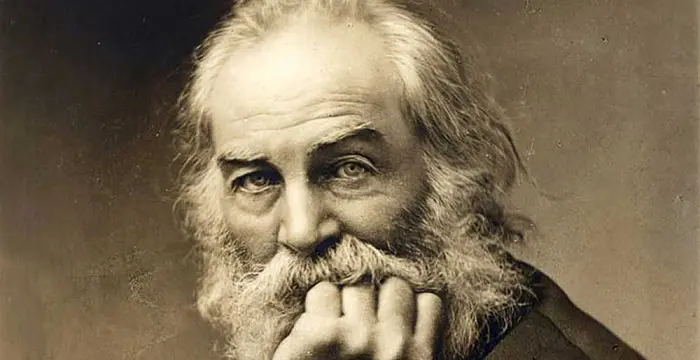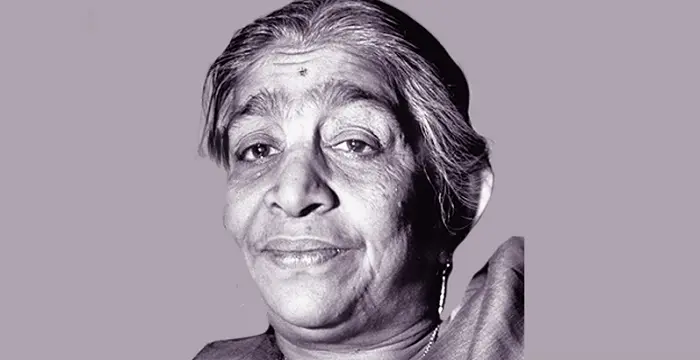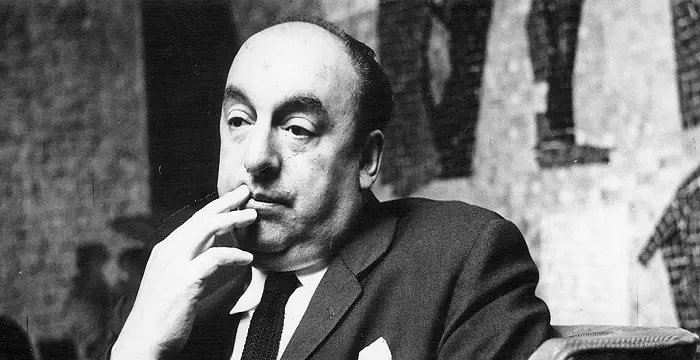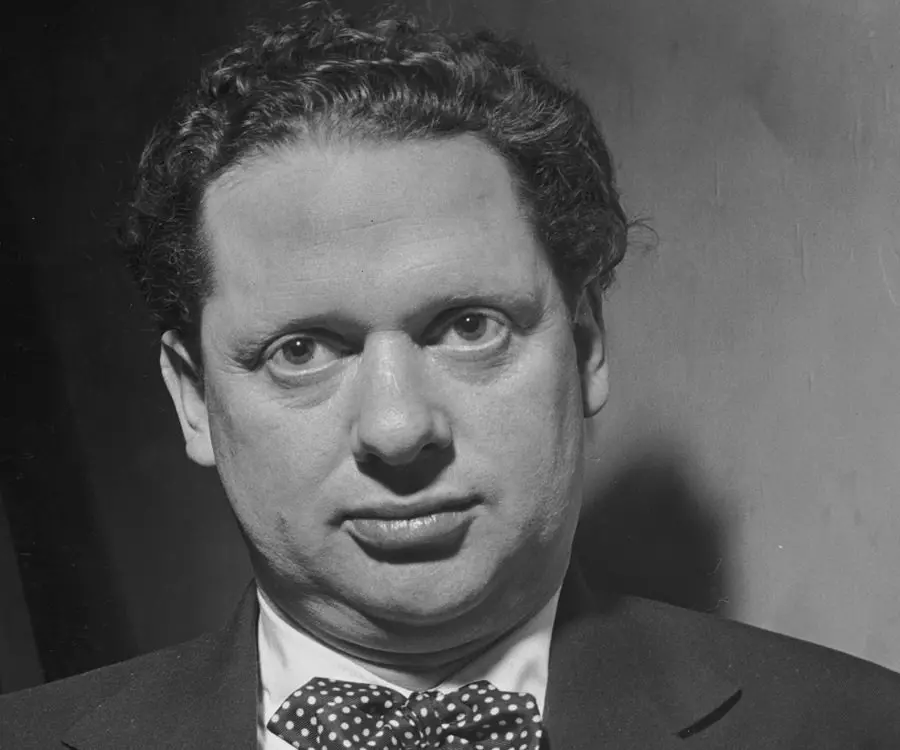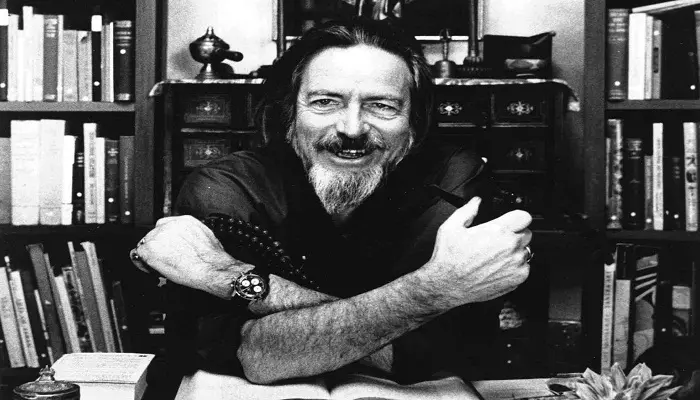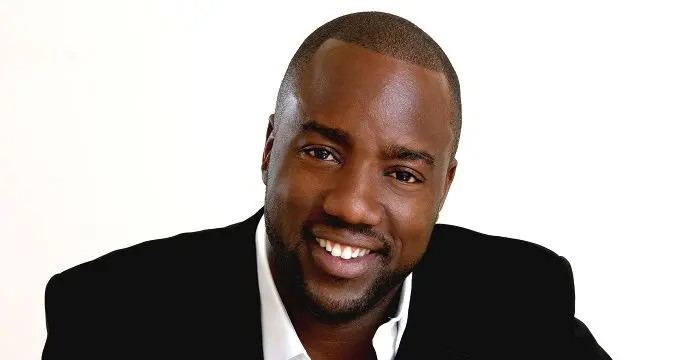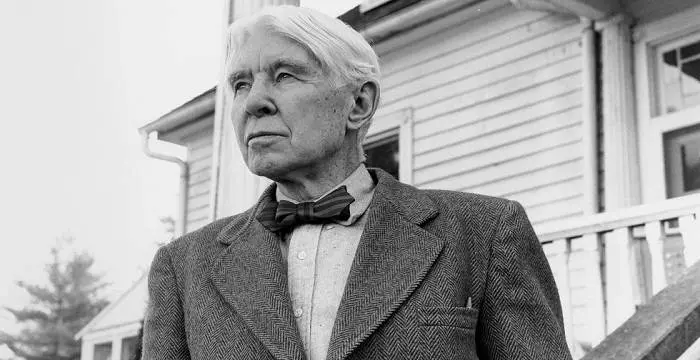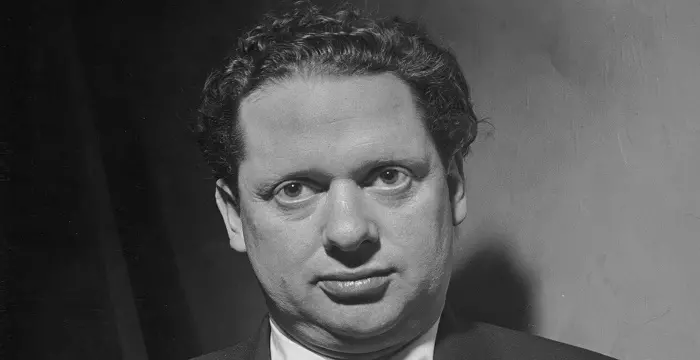
Dylan Thomas - Writers, Birthday and Personal Life
Dylan Thomas's Personal Details
Dylan Thomas was a famous Welsh-born poet and writer known for his important poems and short stories
| Information | Detail |
|---|---|
| Birthday | October 27, 1914 |
| Died on | November 9, 1953 |
| Nationality | Welsh |
| Famous | Alcoholics, Writers, Poets, Poets, Writers |
| Spouses | Caitlin Macnamara |
| Siblings | Nancy |
| Childrens | Aeronwy, Colm Garan Thomas, Llewelyn |
| Universities |
|
| Birth Place | Swansea |
| Gender | Male |
| Father | David John Thomas |
| Mother | Florence Hannah |
| Sun Sign | Scorpio |
| Born in | Swansea |
| Famous as | Poet & Writer |
| Died at Age | 39 |
// Famous Poets
Walt Whitman
Walt Whitman was an American poet, journalist and humanist. Read this brief biography to find more on his life & timeline.
Sarojini Naidu
Sarojini Naidu was an Indian freedom fighter and poet. Read this brief biography to find more on her life.
Pablo Neruda
Pablo Neruda was a Chilean poet, politician and Nobel laureate. Go through this biography to learn more about his profile, childhood, life and timeline.
Dylan Thomas's photo
Who is Dylan Thomas?
Dylan Thomas was a celebrated poet and writer born to Welsh parents in Swansea. Although he wrote entirely in English, his works were mostly rooted in the geographical area of his homeland, Wales. He was never a good student though he was extremely intelligent. From his school teacher father, he derived his intellectual as well as literary flair while his temperament was inheritedfrom his mother, who also inducted in him immense respect for his Celtic heritage. His first book of poems was published when he was still in his teens and by the time he was twenty, he had become an acclaimed poet. Later he started writing prose as well, which also earned him great praise. Unfortunately, he also developed a drinking problem while he was in his early twenties and as a result, he had to endure financial problems all through his life. It also ruined his health and he died at the age of thirty-nine from pneumonia brought on by excess dinking.
// Famous Writers
Alan Watts
Alan Watts was a famous British philosopher known for his Zen teachings and interpretations of Eastern philosophy. Read more about this great philosopher in the following article.
Malik Yoba
Malik Yoba is an American actor, writer, and singer who made his film debut in 1993 with ‘Cool Runnings.’ Check out this biography to know about his childhood, family life, achievements and fun facts about him.
Carl Sandburg
Carl Sandburg was a famous multiple Pulitzer Prize winner writer and poet. Read more about the life and the works of this prolific writer in the following article.
Childhood & Early Life
Dylan Thomas was born on 27 October 1914 in Swansea, South Wales. His father, David John Thomas, was an English teacher at Swansea Grammar School for Boys while his mother, Florence Hannah (née Williams), was a seamstress. He had one sister named Nancy Marles, eight years senior to him.
Although both his parents spoke Welsh, the children were taught only English. Even before Dylan learned to read, his father would recite Shakespeare to him. However, his childhood was also plagued by bronchitis and asthma, ailments that continued to trouble him throughout his life.
The boy began his formal education at Mrs. Hole's dame school, located near his home. Later he described the environment at the school to be ‘firm and kind.’ It is possible that he was often punished for little crimes like not finishing his sums or pulling fellow students’ hair.
In October 1925, he was enrolled at Swansea Grammar School, where his father was a teacher. He was an average student, who preferred to keep to himself. However, he loved to read and was keenly interested in local folk lore.
From his boyhood days, he was fascinated by poems and he soon gathered a great deal of knowledge about English Poetry. During this period, he befriended Daniel Jones. The two wrote hundreds of poems together. Later, Jones would edit a collection of Thomas's poetry.
In 1928, Thomas won the school’s mile race and his photograph was published in some local newspaper. For some reason, he considered it to be a very major achievement for he carried the photograph with him until his death.
Sometime now, he also started writing poetries in a penny notebook, many of which were published in the school magazine. The first poem, dated 27 April 1930, was titled ‘Osiris, come to Isis.’
Later he also became an editor of the magazine. However, he did not complete his education and left the school in 1931. He was then sixteen years old.
Birth Of A Poet
In 1931, on leaving his school, Dylan Thomas became a reporter for the South Wales Daily Post. However, he did not remain there for long. In December 1932, eighteen months after he had joined his duty, he had to leave the job under pressure.
Thereafter, he concentrated on writing poems while supporting himself by freelance journalism. Sometime now, he also tried his hand at acting and joined an amateur dramatic group, which is now known as Swansea Little Theatre.
It was also during this period that he befriended Bert Trick, an amateur poet and grocer, who inspired him to write a poem on immortality, resulting in his famous poem, ‘And death shall have no dominion.’ It was written in April 1933 and published in ‘New English Weekly ‘on May 8.
‘Before I Knocked’, ‘The Force That Through the Green Fuse Drives the Flower’ and ‘Light breaks where no sun shines’ are a few other popular poems of this period. Among these, the last mentioned poem, published in ‘The Listener’ in 1934, was noticed by T. S. Eliot, Geoffrey Grigson and Stephen Spender.
They contacted Thomas and subsequently in April 1934, at the age of nineteen, Thomas won the Sunday Referee’s Poet’s Corner Prize. It included their sponsorship of the winner’s first book.
Dylan Thomas now moved to London to oversee the publication of the book. Titled, ’18 Poems,’ it was published in December 1934. Initially, 500 copies were produced, but later in 1936, it was reissued.
The book drew heavily from the collection of poems he had earlier penned down in his notebooks. As it began to get critical acclaim, he got entry into the London poetry world. It was during this period that he began drinking heavily.
His second book of poems, ‘Twenty-Five Poems’ was published in 1936. Half of the poems in this book were written in his teens, while he was living in his father’s house at Cwmdonkin Drive.
Return To South Wales
Thomas Dylan married Caitlin Macnamara in 1937 and moved to the fishing village of Laugharne, Carmarthenshire, early the next year. During his stay in the city, he wrote many short stories, which were published in various magazines.
In 1939, he had his third book published. Titled ‘The Map of Love’, it contained sixteen poems and twenty short stories, earlier published in various magazines.
Thereafter on 4 April 1940, he published his fourth book, ‘Portrait of the Artist as a Young Dog’, containing stories, which were mostly autobiographical, based in Swansea. Unfortunately, both these books were initially commercial failures. Therefore, Thomas was forced to depend on his meager income from writing and reviewing.
To support his growing family, he now began to borrow money from friends. Unable to return them, he left Laugharne in July 1940 and put up with John Davenport in Marshfield, Gloucestershire.
World War II Years
Dylan Thomas and Caitlin moved to London in 1941. By then, the Second World War had set in and Thomas was called for conscription but was spared from active duty because of his bad lungs. However for some time, he served as antiaircraft gunner.
During this period, the stressed writer supplemented his income by writing scripts for the BBC. Although it provided some respite, the income was not regular and therefore, he continued to struggle financially.
At last he found employment with Strand Films, which for the first time, provided him with regular income. From 1942, he wrote scripts for at least five films for the company.
In 1944, as the threat of bombing by the Germans began to increase, he moved his family first to Blaen Cwm near Llangain and then to New Quay.There in the month of November, he finished his well known poem, ‘Vision and Prayer.’ The following year, he wrote ‘Holy Spring.’
After The War
The year 1945 was a turning point in Dylan Thomas’s life. Although he had earlier written for BBC, it was not regular. But from October 1945, he began to appear regularly on it—an association which lasted till his death—and gave hundred of talk shows on poetry reading and discussions.
Later on from late 1946, he began to take part in BBC’s ‘Third Programme’, appearing in plays like ‘Comus’, ‘Paradise Lost’ and ‘Agamemnon.’ Very soon, he became a popular radio voice and a celebrity.
Also in 1946, he had his fifth book of poetry published. Titled, ‘Deaths and Entrances’, it dealt mainly with the effects of World War II and soon became very popular.
In spite of such successes, poverty continued to haunt him. Unable to pay the rents, he lived in the garden summer house of distinguished historian, A.J.P. Taylor, in Disney, until 1949, travelling to London only in connection of his work with BBC.
Meanwhile in 1947, he received a Traveling Scholarship from the Society of Authors. While on a visit to Florence, he wrote a number of poems, including ‘Do not go gentle into that good night’. Later, they were published in ‘In Country Sleep, And Other Poems.’
Later in 1949, Mrs. Margaret Taylor bought Thomas a house (named Boathouse) at Laugharne, where Thomas lived until his death. Close to the house was a garage, which he acquired for five pounds; it served as his writing den and he created many of his best poems there, including ‘Over St. John’s Hill.’
In 1950, he was invited to New York and there he embarked on a three-month tour of arts centers and campuses. Although it was a highly successful tour both critically and financially, he still continued to drink heavily and turned out to be a difficult guest.
On returning to England, he continued with his literary pursuits and in 1952, published two more books, ‘In Country Sleep and Other Poems’ and also a collection of his old poems ‘Collected Poems, 1934–1952’. Also in the same year, he took his second trip to the U.S.A.
It was during this tour that he recorded is first poetry in vinyl; it was released by Caedmon Records later that year. Though mainly a work on poems, it also included ‘A Child's Christmas in Wales’, which came to be considered his most popular prose work in America.
In 1953, he undertook his third trip to America. On his return he wrote ‘Under Milk Wood’ for BBC and sent the manuscript to the producer on 15 October 1953. On 19 October the same year, he left for the United States again, never to return.
Major Works
Of all his poems, ‘Do not go gentle into that good night’ is said to be the most popular. Written in 1947, it is famed for the strong emotions it incites. Many consider it to be the best example of villanelle.
’Under Milk Wood’ is another of his famous works. Written in prose form for the BBC, it invites the audience to visit a fictional small Welsh fishing village called Llareggub and listen to the thoughts and dreams of its inhabitants. The work was broadcast after his death and made into a film in 1972.
Awards & Achievements
Dylan Thomas’ last collection ‘Collected Poems, 1934–1952’ won the Foyle poetry prize.
Personal Life & Legacy
On 11 July 1937, Dylan Thomas married Caitlin Macnamara, a 22 year old dancer of Irish descent, who had run away from home to pursue a career in dance. Although they remained married until his death, they had a very tremulous relationship, each having multiple affairs outside marriage.
In spite of that, the couple had three children, Llewelyn, Aeronwy and Colm. Among them, their second child, Aeronwy Bryn Thomas-Ellis, grew up to be a translator of Italian poems.
During his last visit to the US in 1953, Thomas was scheduled to read poetries in forty university towns across the country. However, he was unwell from the beginning and relied heavily on inhalers. On 27 October 1953, while celebrating his thirty-ninth birthday in a restaurant in New York, he collapsed.
Attributing his illness to alcoholism, his physician administered morphine, which induced him to go into coma. He was admitted to St. Vincent's Hospital, where he died on 9 November 1953. The medical report attributed his death to pneumonia brought on by alcoholism. His body was brought back to Laugharne for burial.
The Boathouse where he spent his last years was turned into a museum. Housing many of his memorabilia and some of his original furniture, it receives about 15,000 visitors every year.
Apart from a number of monuments, Swansea, the city of his birth, is home to Dylan Thomas Theatre and Dylan Thomas Center. Besides, Dylan Thomas Prize and Dylan Thomas Screenplay Award have been established in his honor.
// Famous Alcoholics
Tennessee Williams
Tennessee Williams was one of the greatest playwrights of the 20th century. This biography of Tennessee Williams provides detailed information about his childhood, life, achievements, works and timeline.
Mike Tyson
Mike Tyson is a former heavyweight boxing champion, known for his ferocious and intimidating style. Read this biography to know about his life, profile & timeline.
Keith Urban
Keith Urban is a Grammy Award winning country music singer and guitarist. This biography of Keith Urban provides detailed information about his childhood, life, achievements, works & timeline.
Dylan Thomas's awards
| Year | Name | Award |
|---|---|---|
Other | ||
| 0 | 1982 - the annual Swansea Bay Film Festival | |
| 0 | 2005 - the Dylan Thomas Screenplay Award | |
| 0 | 2004 - the Dylan Thomas Prize | |
Dylan Thomas biography timelines
- // 27th Oct 1914Dylan Thomas was born on 27 October 1914 in Swansea, South Wales. His father, David John Thomas, was an English teacher at Swansea Grammar School for Boys while his mother, Florence Hannah (née Williams), was a seamstress. He had one sister named Nancy Marles, eight years senior to him.
- // 1925In October 1925, he was enrolled at Swansea Grammar School, where his father was a teacher. He was an average student, who preferred to keep to himself. However, he loved to read and was keenly interested in local folk lore.
- // 1928In 1928, Thomas won the school’s mile race and his photograph was published in some local newspaper. For some reason, he considered it to be a very major achievement for he carried the photograph with him until his death.
- // 27th Apr 1930Sometime now, he also started writing poetries in a penny notebook, many of which were published in the school magazine. The first poem, dated 27 April 1930, was titled ‘Osiris, come to Isis.’
- // 1931Later he also became an editor of the magazine. However, he did not complete his education and left the school in 1931. He was then sixteen years old.
- // 1931 To 1932In 1931, on leaving his school, Dylan Thomas became a reporter for the South Wales Daily Post. However, he did not remain there for long. In December 1932, eighteen months after he had joined his duty, he had to leave the job under pressure.
- // 1933It was also during this period that he befriended Bert Trick, an amateur poet and grocer, who inspired him to write a poem on immortality, resulting in his famous poem, ‘And death shall have no dominion.’ It was written in April 1933 and published in ‘New English Weekly ‘on May 8.
- // 1934‘Before I Knocked’, ‘The Force That Through the Green Fuse Drives the Flower’ and ‘Light breaks where no sun shines’ are a few other popular poems of this period. Among these, the last mentioned poem, published in ‘The Listener’ in 1934, was noticed by T. S. Eliot, Geoffrey Grigson and Stephen Spender.
- // 1934They contacted Thomas and subsequently in April 1934, at the age of nineteen, Thomas won the Sunday Referee’s Poet’s Corner Prize. It included their sponsorship of the winner’s first book.
- // 1934 To 1954On returning to England, he continued with his literary pursuits and in 1952, published two more books, ‘In Country Sleep and Other Poems’ and also a collection of his old poems ‘Collected Poems, 1934–1952’. Also in the same year, he took his second trip to the U.S.A.
- // 1936Dylan Thomas now moved to London to oversee the publication of the book. Titled, ’18 Poems,’ it was published in December 1934. Initially, 500 copies were produced, but later in 1936, it was reissued.
- // 1936His second book of poems, ‘Twenty-Five Poems’ was published in 1936. Half of the poems in this book were written in his teens, while he was living in his father’s house at Cwmdonkin Drive.
- // 1937Thomas Dylan married Caitlin Macnamara in 1937 and moved to the fishing village of Laugharne, Carmarthenshire, early the next year. During his stay in the city, he wrote many short stories, which were published in various magazines.
- // 1937On 11 July 1937, Dylan Thomas married Caitlin Macnamara, a 22 year old dancer of Irish descent, who had run away from home to pursue a career in dance. Although they remained married until his death, they had a very tremulous relationship, each having multiple affairs outside marriage.
- // 1939In 1939, he had his third book published. Titled ‘The Map of Love’, it contained sixteen poems and twenty short stories, earlier published in various magazines.
- // 4th Apr 1940Thereafter on 4 April 1940, he published his fourth book, ‘Portrait of the Artist as a Young Dog’, containing stories, which were mostly autobiographical, based in Swansea. Unfortunately, both these books were initially commercial failures. Therefore, Thomas was forced to depend on his meager income from writing and reviewing.
- // Jul 1940To support his growing family, he now began to borrow money from friends. Unable to return them, he left Laugharne in July 1940 and put up with John Davenport in Marshfield, Gloucestershire.
- // 1941Dylan Thomas and Caitlin moved to London in 1941. By then, the Second World War had set in and Thomas was called for conscription but was spared from active duty because of his bad lungs. However for some time, he served as antiaircraft gunner.
- // 1944In 1944, as the threat of bombing by the Germans began to increase, he moved his family first to Blaen Cwm near Llangain and then to New Quay.There in the month of November, he finished his well known poem, ‘Vision and Prayer.’ The following year, he wrote ‘Holy Spring.’
- // 1945The year 1945 was a turning point in Dylan Thomas’s life. Although he had earlier written for BBC, it was not regular. But from October 1945, he began to appear regularly on it—an association which lasted till his death—and gave hundred of talk shows on poetry reading and discussions.
- // 1946Later on from late 1946, he began to take part in BBC’s ‘Third Programme’, appearing in plays like ‘Comus’, ‘Paradise Lost’ and ‘Agamemnon.’ Very soon, he became a popular radio voice and a celebrity.
- // 1947Meanwhile in 1947, he received a Traveling Scholarship from the Society of Authors. While on a visit to Florence, he wrote a number of poems, including ‘Do not go gentle into that good night’. Later, they were published in ‘In Country Sleep, And Other Poems.’
- // 1947Of all his poems, ‘Do not go gentle into that good night’ is said to be the most popular. Written in 1947, it is famed for the strong emotions it incites. Many consider it to be the best example of villanelle.
- // 1949In spite of such successes, poverty continued to haunt him. Unable to pay the rents, he lived in the garden summer house of distinguished historian, A.J.P. Taylor, in Disney, until 1949, travelling to London only in connection of his work with BBC.
- // 1949Later in 1949, Mrs. Margaret Taylor bought Thomas a house (named Boathouse) at Laugharne, where Thomas lived until his death. Close to the house was a garage, which he acquired for five pounds; it served as his writing den and he created many of his best poems there, including ‘Over St. John’s Hill.’
- // 1950In 1950, he was invited to New York and there he embarked on a three-month tour of arts centers and campuses. Although it was a highly successful tour both critically and financially, he still continued to drink heavily and turned out to be a difficult guest.
- // 1953In 1953, he undertook his third trip to America. On his return he wrote ‘Under Milk Wood’ for BBC and sent the manuscript to the producer on 15 October 1953. On 19 October the same year, he left for the United States again, never to return.
- // 1953During his last visit to the US in 1953, Thomas was scheduled to read poetries in forty university towns across the country. However, he was unwell from the beginning and relied heavily on inhalers. On 27 October 1953, while celebrating his thirty-ninth birthday in a restaurant in New York, he collapsed.
- // 9th Nov 1953Attributing his illness to alcoholism, his physician administered morphine, which induced him to go into coma. He was admitted to St. Vincent's Hospital, where he died on 9 November 1953. The medical report attributed his death to pneumonia brought on by alcoholism. His body was brought back to Laugharne for burial.
// Famous Writers
Joyce Meyer
Joyce Meyer is a Christian author and speaker. This biography provides detailed information about her childhood, life, achievements, works & timeline
Temple Grandin
Temple Grandin is a well-known American writer, autistic activist and animal expert. This biography profiles her childhood, life, achievements, career and timeline
Tennessee Williams
Tennessee Williams was one of the greatest playwrights of the 20th century. This biography of Tennessee Williams provides detailed information about his childhood, life, achievements, works and timeline.
Charles Bukowski
Charles Bukowski was a German-born American novelist, short story writer and poet. With this biography, learn in details about his childhood, life, works, career and timeline
Susan Sontag
Susan Sontag is an American critical essayist, cultural analyst, novelist, political activist, filmmaker and playwright of international repute. Read on to find out more about her childhood, career, profile and timeline.
Suze Orman
Suze Orman is an American television host, financial advisor, author and motivational speaker, famous for her ‘The Suze Orman Show’ on CNBC. This biography profiles her childhood, life, career, works, achievements and timeline.
Dylan Thomas's FAQ
What is Dylan Thomas birthday?
Dylan Thomas was born at 1914-10-27
When was Dylan Thomas died?
Dylan Thomas was died at 1953-11-09
Where was Dylan Thomas died?
Dylan Thomas was died in Greenwich Village
Which age was Dylan Thomas died?
Dylan Thomas was died at age 39
Where is Dylan Thomas's birth place?
Dylan Thomas was born in Swansea
What is Dylan Thomas nationalities?
Dylan Thomas's nationalities is Welsh
Who is Dylan Thomas spouses?
Dylan Thomas's spouses is Caitlin Macnamara
Who is Dylan Thomas siblings?
Dylan Thomas's siblings is Nancy
Who is Dylan Thomas childrens?
Dylan Thomas's childrens is Aeronwy, Colm Garan Thomas, Llewelyn
What was Dylan Thomas universities?
Dylan Thomas studied at Swansea Grammar School
Who is Dylan Thomas's father?
Dylan Thomas's father is David John Thomas
Who is Dylan Thomas's mother?
Dylan Thomas's mother is Florence Hannah
What is Dylan Thomas's sun sign?
Dylan Thomas is Scorpio
How famous is Dylan Thomas?
Dylan Thomas is famouse as Poet & Writer
